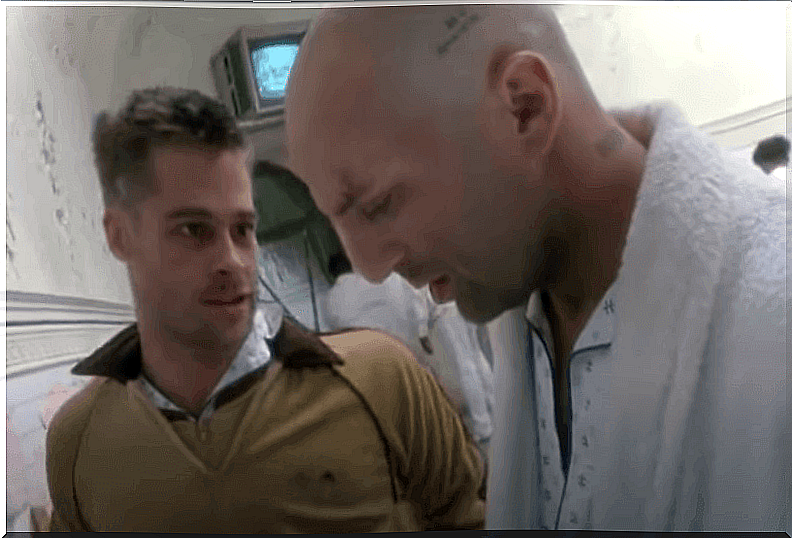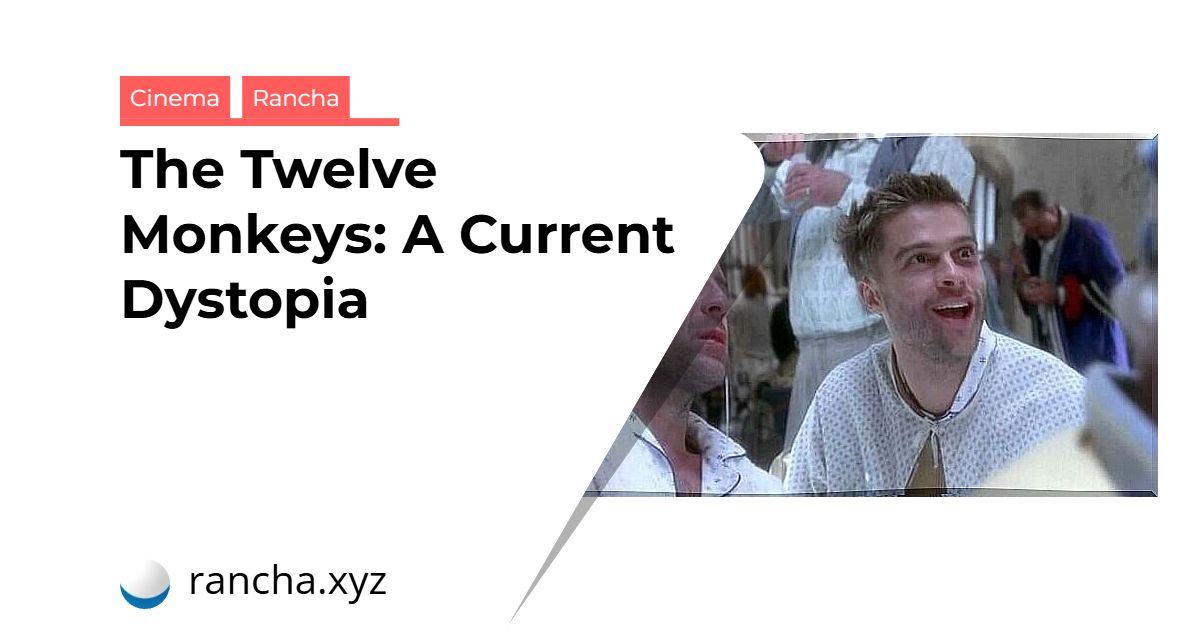Reality always ends up trumping fiction. We would never have thought that this phrase would make as much sense as it does now, and certainly if we had been told just a few months ago that in the 21st century we would live in such a critical health situation, we would not have believed it. Today, we rescued a film that warned of an inhospitable future as a result of a virus : The Twelve Monkeys (Gilliam, 1995).
Fiction has been surpassed to such an extent that dystopia no longer surprises us ; not even Charlie Brooker – the creator of Black Mirror – wants to continue his series. However, despite the circumstances, it never hurts to review those films that seemed to predict what was about to happen.
The Twelve Monkeys: dystopian science fiction
We have commented on other occasions that dystopia, as a branch of science fiction, seems to alert us to bleak and inhospitable futures. Futures that, on the other hand, can be a direct consequence of our present if we don’t take the necessary steps to avoid it.
Thus, dystopia has become an especially prolific genre in the 21st and late 20th centuries, as many seem to have foreseen the negative consequences of an unprecedented technological advance.
Today, among all these dystopias, The Twelve Monkeys seems much more real than expected. That future in which humanity was condemned to live underground as a result of a virus makes more sense today than ever before.
Filmmaker Terry Gilliam, who had already tasted the honey of success with the Monty Python group, was inspired by the French film La Jetée (Marker, 1962) to create the well-known The Twelve Monkeys .
Bruce Willis shines in the lead role, playing a man who, born in the late 1980s, sees the world he knew disappear due to a virus. Condemned to live underground with the rest of the humans, he is sent on a series of missions aimed at correcting the mistakes of the past. That is, understanding the origin of the virus and obtaining samples that allow scientists to develop a vaccine.
As an antagonist, we find a young Brad Pitt, who already wanted to dissociate himself from the role of the “handsome” and gives us a great interpretation of madness. The underworld in which James Cole (Bruce Willis) inhabits appears before our eyes as dirty, dark, inhospitable and gloomy.
The staging is as peculiar as the filmmaker who signed the film. Time travel frames a film that has never gained as much relevance as it does today.
Science fiction is not only about machines and space travel, but also travels into the past (or present) from an agonizing and dismal perspective. The future can be scary if we don’t act right in the present.
Far from being carried away by the special effects, Gilliam opts for a suspenseful approach, in which the protagonist must unravel all the actions that led to what happened to obtain a cure or stop the progress of the problem.
The representation of madness
There’s nothing I like more about The Twelve Monkeys than its view of the human species through the walls of a madhouse. The character played by Brad Pitt, Jeffrey Goines, takes on a special relevance in these sequences. Somehow, subjecting the hero sent from the future, James Cole, to a situation like the madhouse makes our species very much in evidence.
In the same way, the asylum appears to be complete chaos before our eyes; a place that seems to exclude all those people who distance themselves from what is established and which, far from reinserting them, ends up completely separating them from society.
The spectator knows perfectly well that James Cole is sane, but the world does not seem to see him in the same way and, therefore, he is subject to an environment almost more inhospitable and chaotic than the apocalypse itself.
The exclusion of the “crazy” takes me back to Foucault and his History of madness in classical times , a work in which he observes how the “crazy” changed over time and how, in the same way, he was condemned to exclusion.

there is no solution
Finally, despite Cole’s time travels and multiple attempts to change the past, it seems that The Twelve Monkeys’ message is clear: there is no solution, not even trying to change the past, as history repeats itself like a cycle.
Humanity, somehow, was doomed to suffer the consequences of the virus. Therefore, the only solution was to look for a vaccine or some medicine that could alleviate the disease.
In that sense, the female role in the film is interesting, especially from the current point of view. Dystopia seems to be a genre that heavily punished women, as we see in The Handmaid’s Tale or V for Vendetta . Women, as they are often excluded, seem to find themselves in a more vulnerable position in dystopias.
What happens in The Twelve Monkeys ? The only relevant female character is Dr. Railly, a psychiatrist who will help Cole in his investigation. What draws attention – as we said, from the present day onwards – is the fact that the character is built around a man. A man who kidnaps her and with whom she ends up developing a love story. But it was the 90s, and let’s not question this plot at a time when this kind of story was ‘in’.
Leaving this issue behind, we are facing a film that walks in hopelessness, that seems to leave us with a bittersweet taste and that ends up telling us that “no remedy, there is no solution”. Thus, humanity seems to be doomed to disaster, to the inevitability of that invisible enemy that kept us imprisoned or, as in the movie, hidden.
 rancha.xyz Be free to choose their own route to self-knowledge, health and balance of body and soul.
rancha.xyz Be free to choose their own route to self-knowledge, health and balance of body and soul.




